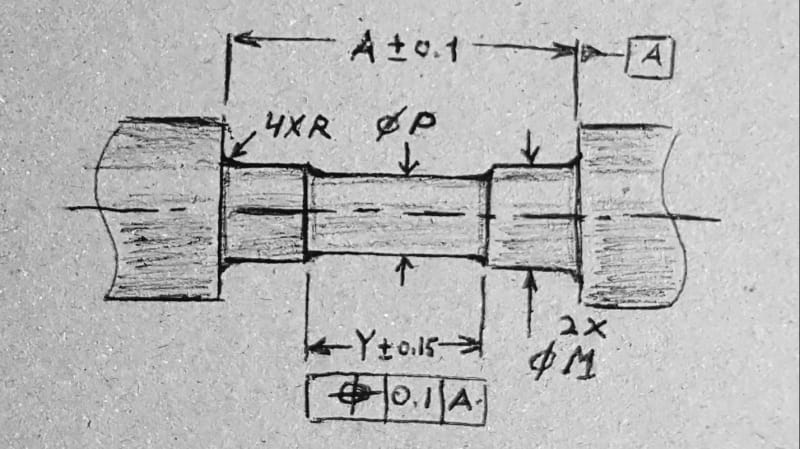Hi Burunduk,
I think those circular elements creating a feature of size are just as valid as the line elements at the ends of an elongated hole. I also would say that anything that can be measured with a CMM can be measured with hard gaging, but in some cases some special tooling may be needed to minimize uncertainty and enable the hard gaging measurements.
I think features lacking opposed points can be interrupted features of size. Actual local size as it is currently defined, with all the various ways people are left to "interpret" it, is a problematic definition and maybe even concept. I really hope the next version of Y14.5 fixes the problems with it.
Drafted features that have 2D size tolerances applied at one end or the other (at the mold line), or with basic dimensions locating size tolerances at specific location(s) on a drafted feature, are not features of size. They have an axis or center plane, similar to a feature of size, but they do not constrain a mating envelope like a feature of size does. So, I think position should be thought of as a tolerance that can be applied to an axis, center plane, or center point rather than a tolerance that can be applied to a feature of size.
Hi Kedu,
The <FF> modifier applying only at RFS is a restriction that could be said to be because extending it to tolerances applied at MMC or LMC will be difficult, so this will be addressed in a later version of Y14.8, but I would not agree with this view. I think the <FF> modifier should always and forever be restricted to RFS only. As I said above, a drafted feature will have an axis or center plane, but it is not a feature of size. I think the existence of tolerances modified at MMC or LMC is a source of great confusion, to the point that I think they should be deleted from the language. They have lots of history behind them though. For technical reasons, I think it would be a no-brainer to come up with a better way to apply a single boundary surface control, as tolerances modified at MMC or LMC always should be thought of as doing. From a people and politics point of view though, this change will be very difficult to make.
I think it is the "axis interpretation" (resolved geometry method, to use a better term) for tolerances at MMC or LMC that needs to be deleted from the standard. For tolerances at RFS, the mating feature should center within the considered feature, so the axis, center plane, or center point is a relevant feature element that a position tolerance should be used to control. For MMC or LMC, the functional case is that clearance/space must be available for MMC, or material must be present for LMC. Since the mating feature will not center itself within the considered feature the axis is not relevant (or not relevant enough) for these cases, the surface is the feature element that should be controlled, from a functional point of view. I don't think position or straightness or flatness or an orientation tolerance at MMC or LMC is the best way to specify a surface control, but over 50 years of history with this convoluted approach will make this difficult to change. Some may argue that the results from resolved geometry method and the surface method differ very little, with the resolved geometry method just being more conservative. My reply to that is that a more conservative result will lead to rejection of parts that are functional. When the parts cost a few pennies that may not be a big deal, but in some industries each individual part can be very expensive. I think we need only one method that clearly addresses the feature surface for these cases.
If I had more time this morning I might have been able to say some of this more efficiently. I hope this explains well enough what I am trying to say.
Dean


![[glasses] [glasses] [glasses]](/data/assets/smilies/glasses.gif) . Thankfully, that public review draft of Y14.8 that you might have read includes a restriction that the Full Feature modifier may only be applied for tolerances specified at RFS.
. Thankfully, that public review draft of Y14.8 that you might have read includes a restriction that the Full Feature modifier may only be applied for tolerances specified at RFS.